Do Tradeshow Logistical Costs Influence the Decision to Exhibit?
In difficult economic times, companies look closely at every expense.
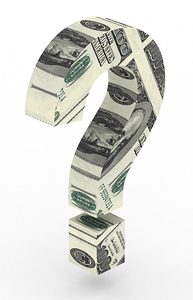 When money is tight, they must decide whether it is still wise to allocate resources to areas that may have been a “no-brainer” in stronger markets. Naturally, marketing expenses are no exception, and trade show exhibiting can be a large portion of many companies’ marketing budgets. The cost of logistics for tradeshow exhibiting (freight, drayage, setup, electrical, etc.) can be substantial. As a result, it will almost certainly be a candidate for the chopping block when executives start cutting back.
When money is tight, they must decide whether it is still wise to allocate resources to areas that may have been a “no-brainer” in stronger markets. Naturally, marketing expenses are no exception, and trade show exhibiting can be a large portion of many companies’ marketing budgets. The cost of logistics for tradeshow exhibiting (freight, drayage, setup, electrical, etc.) can be substantial. As a result, it will almost certainly be a candidate for the chopping block when executives start cutting back.
However, the decision to exhibit in a show is seldom based entirely on logistical costs. As long as advertised attendance figures are favorable, and the following items are true of a show, a company will find the funds to exhibit.
- The company has something to show it’s customers, both current and potential.
- Their competitors will be attending.
- Their biggest customers will be attending.
They may scale back their exhibit space, look at alternative ways to make a presence, or just complain about having to spend the money, but one way or another, they’ll be there. It’s a difficult reality, but in business, perception is important. When a company doesn’t attend a major show, the first thing attendees think is that they must be either in dire straits financially, or that they had nothing to show, and therefore are not worth considering as a vendor. Companies must carefully consider all the potential areas of impact before deciding not to attend a show.
Looking for areas to trim your tradeshow exhibiting budget? Let’s Talk.
Tips for Designing Effective Exhibit Graphics
Exhibit design is a powerful reflection of your brand and, in fact, part of your branding. Trade show booths involve your company logo, products and employees. They serve as giant, interactive business cards.
So, even if you’re not making a huge investment in exhibit design, it’s worth revisiting the core elements of your branding to make sure all the pieces of the puzzle fit together. Here, we’ll take a quick look at graphically and lyrically spicing up your exhibit booths.
Trade Show Graphic Design
A competent exhibit company should be able to provide you with exhibit designs that effectively communicate your brand. You may even wish to incorporate into this process your in-house or consulting graphic designer.
- Embrace your three-dimensionality. Most of your branding materials are probably flat, “conventional” pieces. Graphic designers jump at the opportunity to work with exhibit designers to breathe fresh life into larger, 3D displays.
- Maintain focus. While it’s tempting to incorporate every bell and whistle within your budget, visitors will lose interest quickly if they can’t figure out what’s going on. Speak to your specific offerings and value-added features relatively early in the engagement process.
- Consistent with the 3D theme, reach out and grab your audience’s attention. You’re not only trying to engage people at your booth but those down the aisle and across the room.
Trade Show Custom Copy
 A bit more innovation is possible with your written materials than with your brand graphics. While you can’t and shouldn’t change your logo for every trade show, show-specific copy is an excellent idea.
A bit more innovation is possible with your written materials than with your brand graphics. While you can’t and shouldn’t change your logo for every trade show, show-specific copy is an excellent idea.
Written materials can be customized–partially, at least–for each trade show you participate in. Keep everything as short and concise as possible. Making sure that the information is timely will help you to stand out from the crowd, especially if your competitors’ materials have gone stale. Engage your customers and support your sales and marketing strategies with a custom trade show booth.
Is Your Trade Show Exhibit a Good Investment?
Many marketing executives can’t completely answer this question. They essentially repeat what was done in previous years with slight variations in execution. Taking a moment to analyze your trade show goals and results can help you find new ways to acquire more customers and make your trade show investment really pay off.
Trade shows are expensive, but they can also be one of the best sales and marketing investments your company makes. Trade show exhibits provide unparalleled opportunities to forge stronger customer relationships, win-back old customers and acquire new, high-value customers. But you should expect this effort to deliver more.
Maximizing your Trade Show Exhibit investment
- Incremental sales and profits
Track your results and determine your Trade Show ROI. More information about how to calculate your Trade Show ROI. If your trade show ROI is not acceptable, then look for ways to make improvements. First, look for gaps in sales and customer tracking to ensure that the data is accurate and complete. Next, make sure that the shows selected were good choices and had significant attendance from your target customers.
If your trade show ROI is not acceptable, then look for ways to make improvements. First, look for gaps in sales and customer tracking to ensure that the data is accurate and complete. Next, make sure that the shows selected were good choices and had significant attendance from your target customers.
Then look for marketing gaps: ineffective or no lead follow-up, insufficient planning, staffing issues or other reasons that the shows were not productive. Once you identify an issue, you can adjust your strategy and improve results.
- Improved competitive position
Did your company strengthen relationships with current customers, increase brand awareness, launch a new product that differentiated your company, expose your company and products to a new market? Generally, did your trade show investment help position your company for future sales gains and market share increase?If your trade show exhibit doesn’t improve your market position, then carefully evaluate your strategy. How can you adjust your trade show marketing plan to outdo your competition? - PR and Investor Relations
Did you generate meaningful press coverage? Did your company’s trade show presence result in improved perception of your company in the investor community? Do you get any significant consumer education opportunities from the show?If your trade show attendance has not been a PR opportunity, it is a promotional gap that should be evaluated for potential for your company. - Market intelligence
Trade shows are an excellent way to gain competitive intelligence. They also can be used for market research and provide an excellent opportunity to gain customer insight.If your trade show isn’t providing your company with market intelligence, develop a plan to maximize this unique opportunity to gather both the latest competitive info and to learn more about your customers.
Have you analyzed your trade show investment? Are you satisfied with your results?
Marketing Strategy Session: Tracking Trade Show ROI
Today, I read a survey and was shocked to learn that fewer than 20% of trade show exhibitors track the ROI (Return on Investment) from their trade show campaigns. After I thought about it a moment, however, I realized that this is not that surprising. Most sales and marketing activities are not carefully evaluated so why should a trade show be any different?
Why track Trade Show ROI?

Trade shows are one of the most productive ways to reach new qualified prospects and generate significant incremental sales. If you do not track and measure the success of the show, your company may make the decision to eliminate a critical trade show event and loose sales without ever knowing it mattered. Beyond this, there are other reasons to analyze trade show results and determine how successful you are. An ROI analysis can provide you with information about the most productive elements of your trade show campaign and help you optimize future trade show efforts.
How to measure Trade Show ROI
The first step is to gather the data needed to calculate the ROI.
- Determine the total costs of trade show and directly associated events. This is the Trade Show Marketing Expense. Include everything include staff, travel, collateral material and follow-up sales and marketing expenses.
- Estimate the Total Incremental Sales from the show. This is… Total show sales plus New leads in the pipeline and expected sales from these new leads usually based on historic conversion rates plus Incremental sales from existing customers that are the result of the trade show effort.
- List the other benefits of the show, including:
Strengthening relationships with current clients.
Increasing brand awareness.
Consumer education efforts.
New product introductions.
Investor relations and improving perception of your company in the financial community.
New market introductions.
Public relations including editorial coverage.
Competitive intelligence.
Customer insight and research.
Once the data is collected it is simple to calculate the ROI.
Total Incremental Sales times Net Margin Rate = Net Margin Dollars
Net Margin Dollars less Trade Show Marketing Expense = Profit Contribution
Profit Contribution divided by Trade Show Marketing Expense = ROI
(typically expressed as a percentage.)
So, for example if…..
Total Incremental Sales = $3.5 million
Net Margin Rate = 16%
Trade Show Marketing Expense = $230,000
Then the ROI would be…..
Net Margin Dollars: $3.5 million times 16% = $560,000
Profit Contribution: $560,000 less $230,000 = $330,000
ROI: $330,000 divided by $230,000 = 143%
So in this example, the trade show marketing ROI was 143% plus any other benefits like those listed in #3 above.
What’s your tradeshow ROI? Have you tracked it? Do you plan to?
Trade Show Planning: Creating a Timeline
Organizing your company’s participation in upcoming trade shows can be stressful and requires precision and strong organizational skills. To make it a tad less stressful, prepare a timeline of things that must get done and when they must be accomplished.  This alone can help you stay on track, reduce some of the nail-biting and prevent missed deadlines that can cost you down the road in lost discounts, rush fees and missed opportunities.
This alone can help you stay on track, reduce some of the nail-biting and prevent missed deadlines that can cost you down the road in lost discounts, rush fees and missed opportunities.
There are deadlines for choosing an exhibit space, for ordering show services, and for creating your exhibit. There is no one right way to create a timeline, as they can be organized in a myriad of ways (deadlines, tasks, etc.). However, once you come up with one that works for you, use it as a master template for creating timelines for all future shows.
Here are some general guidelines to help you in your planning:
12+ months out: Determine your objectives
Identify the role that trade shows will play in your overall marketing and sales plan. Will trade shows be primarily used to generate sales leads and prospective customers?
Conduct research on what shows will best achieve these objectives.
Determine a budget and project your return on investment (ROI).
9-12 months out: Initial planning mode
Compile a list of specific objectives for each show, such as number of leads, number of products sold, amount of publicity sought, etc.
Identify the booth size needed and type of display, along with marketing collateral and promotional items.
Register for the show and reserve your space with show management and request full details of exhibit requirements (deadlines, shipping information, etc.).
Create a trade show marketing plan that uses a mix of promotional methods to reach sales prospects.
6-9 months out: Fine-tuning your message
Develop your sales message that will communicate a compelling story and deliver the key points you want to make in as short a time as possible (preferably less than 30 seconds).
Choose an exhibit company to help create and deliver an exhibit that will fit your needs and budget. Research their capabilities, experience, and design talent, and be sure and check references of past clients.
Determine what promotional strategies, such as giveaways and attractions, you’ll use to draw attendees out of crowded aisles and into your booth.
4-6 months out: Tying up loose ends
Order promotional items (giveaways, takeaways, prizes, etc.)
Confirm delivery dates with your exhibit company to assure your display will be ready on time.
Determine who will be staffing your booth at the show, develop schedules, and plan training sessions.
Make travel and hotel reservations, if you haven’t already.
Determine how your exhibit and accessories will be shipped to the show.
Launch pre-show marketing initiatives.
1-3 months out: Check and double check details
Assemble packets of information for post-show marketing follow-up.
Contact show management for any last-minute details, changes, etc.
Finalize production of display, promotional items, and marketing materials and confirm shipping date.
Schedule dinners, briefings, or other meetings with customers, media, or sales staff.
Re-confirm hotel and travel arrangements. Last minute snafus are costly and can be eliminated by doing one last review of all your staff’s travel plans.
One week out: Crunch time.
Wrap up staff training of booth personnel.
Confirm shipping arrival dates for your display, marketing materials and promotional items.
There’s always going to be that one thing that completely slips your mind, however, having a timeline can help you stay focused, and more importantly, stay on schedule.
Choosing a Tradeshow Display Shipping Carrier
When shipping tradeshow displays, you generally have two types of carriers to choose from:
- Van lines like Atlas, Bekins, United, Allied, etc. who also do moving of high-value products and household goods.
- Motor freight companies who move commodities, manufactured goods, etc.
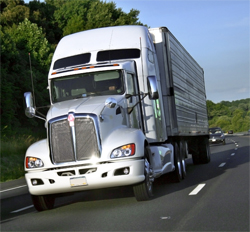 If your exhibit is palletized or crated, you have the option of shipping via van lines or motor freight. If your materials are not crated (also known as “loose” or “pad wrapped”) you must go with a van line.
If your exhibit is palletized or crated, you have the option of shipping via van lines or motor freight. If your materials are not crated (also known as “loose” or “pad wrapped”) you must go with a van line.
Motor freight companies operate on a hub system very much like the airlines, so displays that are loaded on a truck at your facility may be transferred one, two or even more times before reaching their final destination. This extra handling exposes your materials to more wear and tear and greatly increases the possibility of damage. Motor freight shipping costs are usually calculated by weight, although larger, lightweight items may be subject to a different cost calculation called “dimensional weight”.
The advantage to van line shipments is that the trucks are usually going directly from your warehouse to the convention center, so materials are less likely to be transferred from one truck to another. Moving vans use air ride trailers that cushion bumps along the way. Van lines almost always charge by the amount of floor space in the trailer that your materials require.
Total shipping cost can vary a great deal. It is generally assumed that motor freight is less expensive but that is not always the case. Check with your traffic department to see what kind of discounts your company gets from various carriers, make sure that your carrier has tradeshow specific experience and request quotes.
Make sure that your chosen carrier provides you with a way to track your shipment and verify delivery. Last, but certainly not least, be sure to ask your carrier about insurance coverage. The standard coverage that they provide is usually less than $1.00 per pound which won’t even cover the replacement of the crates, let alone the contents.
Do your homework and you can minimize cost. Or, leave the homework to us – we’ll take care of knowing where your tradeshow display is, where it needs to go, and getting everything shipped on time. With our national network of facilities and climate-controlled environments, we are always close by, so shipping your tradeshow exhibits is never a problem. Let’s talk.
Tradeshows on a Shoestring Budget
Attending and exhibiting at a tradeshow can lead to excellent bottom-line benefits for your company: exposure to a highly targeted audience; opportunity to pitch your company’s marketing message; generation of sales leads; and the opportunity to learn more about your industry through panel discussion, speeches, and seminars.
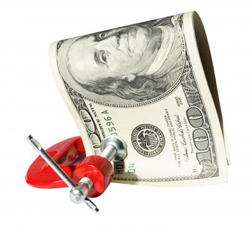 The reality, though, is that in many companies, marketing budget dollars must be spent carefully and each expense may be scrutinized closely. No need to remove tradeshows completely from your marketing plan, however. Take a critical look at your tradeshow expenses and you might find some creative ways to carve some costs out of your overall tradeshow budget.
The reality, though, is that in many companies, marketing budget dollars must be spent carefully and each expense may be scrutinized closely. No need to remove tradeshows completely from your marketing plan, however. Take a critical look at your tradeshow expenses and you might find some creative ways to carve some costs out of your overall tradeshow budget.
Here are a few areas where you might be able to cut costs:
Transportation. This can typically account for a significant portion of your tradeshow budget so it’s the first place you should look at to trim down on expenses. The biggest thing to keep in mind: plan early! Most companies will know six months to a year out that they are going to be exhibiting at a particular show, so plan ahead and make your airline reservations early. Airlines penalize last-minute business travelers with high-priced tickets. Fly everyone in the day before the show and fly them out the last day of the show to save on extra food and lodging costs.
Also, keep in mind other modes of transportation if the event isn’t that far away. Renting a van to take a large group of people or partner with another exhibitor in your area and charter a bus, which can significantly cut down on travel expenses.
Hotel. Typically larger conferences will offer attendees and exhibitors rooms at hotels within a close proximity to the event at a discounted rate. Take advantage of this savings. Booking an economy hotel farther away might seem like a smart strategy, but once you add up taxi fares, it might not make sense. Double up employees in each room to instantly cut hotel costs in half.
Also, if you’re attending multiple events throughout the year, look at hotel chains that offer special discounts for multiple hotel stays or those that offer special member programs that offer additional discounts, such as free nights after a certain amount of stays. Also, book at hotels that offer free breakfast. It might sound silly, but feeding a large group of people breakfast every day will add up to hundreds of dollars after a multi-day stay, and possibly bloat your budget.
Booth rentals. You can instantly shave hundreds off your budget by renting your tradeshow booth. This can be especially helpful for companies that want to exhibit but need to cut tradeshow costs in the short-term as well as for those companies that don’t attend shows frequently. Make sure you read your rental agreement carefully and understand the terms of it. Find out what accessories will come with the booth and what you’re responsible for bringing. Be creative and enhance your rental booth with banner stands, literature racks, lighting and other extras that can increase traffic to your booth.
Shipping. Exhibition halls often add significant costs to receiving and storing your freight and associated material for your company. Instead, ship things such as literature and giveaways directly to your hotel. Mark shipped boxes with a shipping label that reads, “Hold at front desk for (your name)’s arrival.” Hotels do not charge for accepting and holding shipments for guests.
Design Effective Tradeshow Graphics and Maximize ROI
Graphics Are the Most Important Design Element of Your Trade Show Display
For the vast majority of tradeshow displays, the graphics are the most important design element. No matter how beautiful a display is, if you hang poorly designed graphics on it, it just looks awful. And attractive graphics aren’t enough – they must be effective as well if you want to get the maximum ROI on your tradeshow dollars. In order to get the best graphic design results, you should start by carefully considering your objectives and how your tradeshow display’s graphics might help you achieve them.
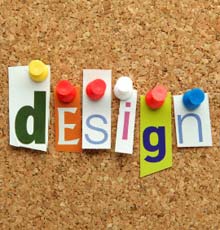 Too often, companies choose to just blow up their logo and a few of their magazine ads or a page from their website, stick them on the backwall and call it a day. People who view a web page or magazine ad spend considerably more time reading and also expect to get complete information from this type of graphic. Tradeshow graphics, on the other hand, need to be read and understood in the 3 seconds that it takes an attendee to walk past your booth.
Too often, companies choose to just blow up their logo and a few of their magazine ads or a page from their website, stick them on the backwall and call it a day. People who view a web page or magazine ad spend considerably more time reading and also expect to get complete information from this type of graphic. Tradeshow graphics, on the other hand, need to be read and understood in the 3 seconds that it takes an attendee to walk past your booth.
Let’s consider the graphics on a standard 10-foot backwall display. The normal way to arrange graphics is to put your company’s name and logo on a large sign at the top. This is just fine if your company is Coca-Cola, or Nike, but lesser known brands might want to add a few words that describe what the company does or maybe a bold statement that grabs the attention of the visitor.
Design Graphics to Support Your Sales Presentation
The balance of the graphics in a small booth can be used to create an atmosphere, list features and benefits of products or show products in use. I prefer to design graphics that support a sales presentation. Once a prospect has stopped at your booth, the booth staff can easily do a brief sales presentation using the graphics as visual support.
Once you have established your objectives, it makes sense to take advantage of the experience an exhibit designer brings to the table. Share with them your goals and allow them to provide input on graphics that are going to be displayed.
Create Exhibits with Curb Appeal
Trade shows are by nature quite chaotic. Attendees bustling from booth to booth while exhibitors fight to garner their attention and interest in their companies’ products or services. Studies have shown that a tradeshow display typically has about three seconds to catch the attention and communicate to a potential customer passing by a booth. To makes things even harder, your booth is competing with possibly hundreds of other displays for attendees’ attention.
 So, exhibitors have a matter of seconds to grab attendees’ and potential prospects’ attention and make an immediate impression. Eye-popping, colorful graphics in tradeshow booths are an excellent way to do just that. Graphics in tradeshow booths can include booth signs, displays, banner stands, and even table cloths. So what makes one booth an attention-grabber and another one that’s easily passed by?
So, exhibitors have a matter of seconds to grab attendees’ and potential prospects’ attention and make an immediate impression. Eye-popping, colorful graphics in tradeshow booths are an excellent way to do just that. Graphics in tradeshow booths can include booth signs, displays, banner stands, and even table cloths. So what makes one booth an attention-grabber and another one that’s easily passed by?
Here are some things to think about when you set about creating the graphics that will hopefully deliver a powerful visual punch and grab the attention of potential prospects.
Pick a good color. The right color can help you both convey a message and stand out amidst the sea of competing booths. Warmer colors, such as red, orange and yellow attract more attention than cooler colors, such as blue, green and white.
Keep images simple. Simple, bold and clear images are the most effective in conveying your marketing message to attendees. The more ornate and involved the graphics, the more you risk confusing, overwhelming and distracting booth visitors. If possible, choose just one simple image.
Headlines are key. So put a lot of thought into writing them! Choose your words very carefully and keep it simple, clear and short. This might be the only shot at grabbing the attention of attendees who are giving your booth at most a passing glance. A crafty, compelling headline may be what brings them in to hear more about your company. Also the shorter the headline, the bigger it can be, increasing visibility.
Keep it light. Lighting is very important to helping draw the attention of attendees and in creating a welcoming atmosphere. Be creative with lighting; choose to spotlight a new product or use warmer lighting to create an inviting environment.
Choose a message that packs a punch. This is a tough one. You already know you have to keep it short and sweet with simple imagery. The things that you must communicate are: who you are, what your business does, and what separates you from your competition.
Theatrical Trade Show Booth Lighting
Theatrical lighting in a trade show booth can add dramatic effect to almost any display property on the show floor. Different lights and lighting effects can be used to enhance color, create a mood among attendees, focus an attendee’s view to a feature area, and create visual texture, all enhancing the attendee’s experience.
However, the budget for theatrical or moving lights can quickly escalate. That’s why, when a company sets out to build a new booth or rent a property, lighting is often the last thing considered, and even more often, the first thing cut back. So how and why should you keep lighting in your trade show budget?
Consider the basics when creating a trade show exhibit lighting package:
- What is the effect you wish to achieve?
- What is the benefit of that effect on the attendee?
- How does that relate to the attendee’s impression of your exhibit?
- What is your budget, and how much of it do you wish to allocate to the lighting package?
“HEY, LOOK AT US!”
Amid the wide expanse of the show floor, a static booth with little or no lighting easily gets lost. However, an exhibit with good lights screams, “Hey, there is something exciting over here!” The result? Attendees come to see what it’s all about. Once the attendee is near or in the booth, colored and moving lights add life to an otherwise static display. The colors and moving “textures” can create a mood of peace, elegance, or an over-all feeling of warmth that can make attendees more at ease, and more likely to stay around.
The additional benefits of trade show booth lighting are simple:
Use lighting to draw attention to areas within the booth you wish to feature. Well-positioned lighting can help your graphics and equipment “pop” amidst the yellowish-hazy hall lighting that tends to be rather drab. Full-color graphics show more color, equipment can appear even more shiny and polished, and the everyday background canvas of the booth fades even further into the background, highlighting the items you really want attendees to focus on.
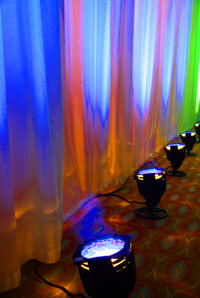 What will you need to include, and what effect will lighting have on cost? First, the overall cost of your electrical order will increase. To create the lumens required just takes more juice. You will also typically need a distribution panel to distribute the electrical. In most cases, this will go on the floor, somewhere in a dedicated space; a safe estimate of space required would be around 100 square feet. In addition to the panel, moving lights may need a lighting board (a sort of “brains,” if you will), to control the intelligent lighting. You will need a technician to program the lights and get the board up and running prior to the show. A good technician, with availability during the show, is likely to be more expensive, but is a good investment. The price may be a little higher, but peace of mind can be priceless, as any mid-show hiccups can be quickly dispelled.
What will you need to include, and what effect will lighting have on cost? First, the overall cost of your electrical order will increase. To create the lumens required just takes more juice. You will also typically need a distribution panel to distribute the electrical. In most cases, this will go on the floor, somewhere in a dedicated space; a safe estimate of space required would be around 100 square feet. In addition to the panel, moving lights may need a lighting board (a sort of “brains,” if you will), to control the intelligent lighting. You will need a technician to program the lights and get the board up and running prior to the show. A good technician, with availability during the show, is likely to be more expensive, but is a good investment. The price may be a little higher, but peace of mind can be priceless, as any mid-show hiccups can be quickly dispelled.
With a well-planned lighting package, your tradeshow ROI can increase traffic and improve attendee perception.
Archives
- July 2021
- June 2021
- May 2021
- April 2021
- October 2018
- September 2018
- August 2018
- July 2018
- June 2018
- May 2018
- April 2018
- March 2018
- February 2018
- January 2018
- December 2017
- November 2017
- October 2017
- September 2017
- August 2017
- July 2017
- June 2017
- May 2017
- April 2017
- March 2017
- February 2017
- January 2017
- December 2016
- November 2016
- October 2016
- September 2016
- August 2016
- July 2016
- June 2016
- May 2016
- April 2016
- March 2016
